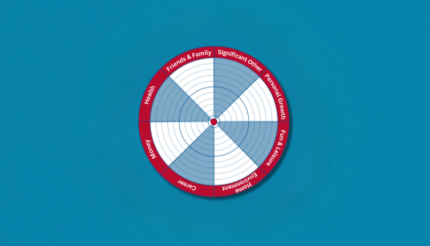Your website and social media channels are billboards to the outside world. People search for your brand and products online and want to find out easily everything they need to know about you: who you are, what you sell, or what you stand for.
As different people need different information, you also want to make sure everyone can find what they need by the way you present your content.
In other words, when producing content, focus on two major objectives:
- Your content should convince people to buy from you.
- It should help people to find you online.
Of these two, selling is the more important. Of course, SEO is also vital so that people can find you, but if they arrive at your website and then don’t buy from you, it was a waste of time. Luckily, if you do the right things to sell, they’ll also serve you to make your brand easy to find online. Let’s see how you can achieve this!
21 Website Strategies to Boost Sales
- Your home page is your headline. What happens on your home page is the most important thing on your website. It needs to be crisp and clean so that people can easily see the next steps to take.
Identify why people come to your page and make it easy for them to find what they’re looking for inside the rest of the website. For example, people come to the Action Coach website to find a coach, get help, or become a coach. The home page guides visitors towards the right area based on their choices.
- Navigation should be simple. The back button is the most used button on the internet. People will use it if your website is hard to navigate. Go to Google Analytics and understand what does and doesn’t work on your home page, then make the necessary changes to improve user experience.
- Use clear language. Make sure your message is clear and easy to follow – even if that means you need to use more words.
- Give them all the information. Including prices. Allow people to buy whatever product or service you provide as soon and as easily as possible.
- Have a CTA (Call to Action) on each page. Ideally you want to make some kind of offer on each page. You can even have multiple levels of response on a page – subscribe to a newsletter, buy something.
- Keep your forms simple: name, email address, phone number.
- Make contact pages straightforward. You should have a list of your members of staff with their contact information.
- Test your buttons. If you have buttons that have never been clicked, change them!
- Test your headlines. Ask friends or family what they think of them too.
- Measure. Using Google Analytics or another program, see how long visitors spend on your website and which pages they visit. Sit down with someone and analyse the data. Do it every week to see which buttons are being used and where people spend the most time.
- Visually stimulating content. Make sure you have video content and pictures on your website. Make them real and engaging.
- Testimonials (preferably written, audio and video). Every page that describes a product or service should have a testimonial.
- Quality content – people need to feel that they know, like, and trust you. SEO (Search Engine Optimisation) and people being able to find you is all about having good content.
- Keep information simple. Use infographics. Add your name and logo to all infographics.
- Answer people’s questions. Have an FAQs section – because people have questions. Write answers to those questions. Ideally also have a video for each. Answer the common questions in your content as well.
- Landing pages. Have landing pages for different products/services and for different target audiences within the site. Not all people land on the home page.
- Mobile friendly. Make sure your site is mobile-friendly and secure. (https://)
- Clean layout. Use a simple layout, not too complex or massive, or this will not only confuse or overload visitors but also make navigating your website slower and more cumbersome.
- Add social media buttons. Don’t have these at the top of the page but position them towards the bottom as you don’t want to take visitors away from your site too quickly.
- Keep your website up to date. Perform regular maintenance. Remove any bad links and update information, add fresh content. Your website makes you money, so don’t view this as a cost. Ensure that you have a website that is easy to update.
- Make things easy to find – not 7 clicks to get to something! Try to have a maximum of 2-3. Think of Amazon with their one-click purchase option. Use professionals, in-house if you have the money to do so. But always use professionals. Your website is your shop window and it’s important to do it right.
21 Social Media Strategies
It’s not free – pay someone (who knows what they are doing) to do it.
Social media is a database. Create a YouTube database / Facebook database.
Use a CRM for all your customers.
- Pick 2-3 platforms where you want to have an active presence. If you use more than this, you need a vast team to handle everything. Facebook is for everyone. LinkedIn and Google Ads for professionals. And then of course there are Insta, Pinterest, YouTube, Twitter … even TikTok is used by businesses these days!
- Consistency. Plan the number of posts you want to go out this week across your chosen channels. Think about what types of posts you want to create and how often you will do each type. Don’t make all of them promotional ones (too ‘sell, sell, sell’) … have some that are conversational, motivational, interesting, or fun.
- Images and video. Visuals are fabulous on social media – especially video. Live videos and Insta / FB stories are powerful and encourage people interact.
- Go live. Do a live video and ensure that all your clients see that you’re live.
- Test and measure. Keep an eye what’s going on. Record the results you get from different types of posts, what time of day or day of the week you posted. This will help you to find your sweet spot for posting new content.
- Join and build communities. Keep active. Share posts from other people or pages and add fresh information regularly.
- It’s okay to use advertising. Facebook wants money – not huge amounts – to reach out to your database. You can be okay with that once you understand it. Put simply, you gain traction, and it works.
- Keep building your database. Add more followers, add more connections. The more followers you have, the more powerful your social media presence. Give people a reason to follow you.
- Interact. Communicate with people who comment. Talk back. If you do a post that gets a lot of reactions or comments, make sure that you are interacting and add your responses. Send a message or connection request to people who are being active in the comments.
- Be sociable. Make friends and acquaintances. Don’t just do business out there. Show that you’re human.
- (And on the other hand …) Sell. Be confident that every 5-6 posts it’s absolutely fine to make a sales pitch.
- Your team is your social media team. Everyone can share your posts. Make sure the whole team is involved in what you are doing.
- Be passionate. When people see emotion and passion, people engage. Be you. Have a personality and don’t hide it, let it shine through.
- Boost high performance posts. If you have one that’s starting to go viral, boost it.
- Use hashtags. Especially on Instagram and Twitter. This allows people to find you by a different route. Around 8-10 hashtags is best. More is too many. Fewer is still better than none. However, don’t overdo hashtags on platforms where they are less used or else they will stand out and look odd.
- When you want to connect with someone, send them a real message. Never send auto-messages. Never! If you can’t be bothered to send me a real message, don’t connect with me!
- Look at your competitors. What kind of things are they posting about?
- Branding and colour scheme. Stick with a consistent colour scheme across all social media platforms. People want to see consistency, and colour helps you to stand out on social media.
19 Automate. Use a scheduler (e.g., Hootsuite or Buffer) to manage the timings, then all you need to do during the week is interact with the people who comment on your posts. There are lots of tools out there to help you achieve consistency with your posting. You can always post more, that’s fine, but scheduling posts will ensure you get something out there regularly.
- Share other people’s posts. If it’s good content, share it.
- Stay up to date. There are updates every month on Facebook, Instagram, LinkedIn. Follow a few social media trainers to stay abreast of the changes.
Homework:
Give a rating for your current activity on your website and social media
Start making a social media plan: Which platforms? How often will you post?
Once you get going, you will grow massively. Get your ideas down on paper, and work on them.
Get started, and then regularly evaluate your website and your social media presence to monitor your progress
Before you know it, you may be needing to employ someone full-time to handle it all!
If you’d like to learn how to accept ownership and take responsibility, to own what has happened in your life and work to change what you don’t like, sign up for a free coaching session where I’ll explain how to help transform your mindset and take control.






I was extremely pleased to discover this page. I want to to thank you for ones time due to this wonderful read!! I definitely appreciated every part of it and I have you bookmarked to look at new information on your web site.